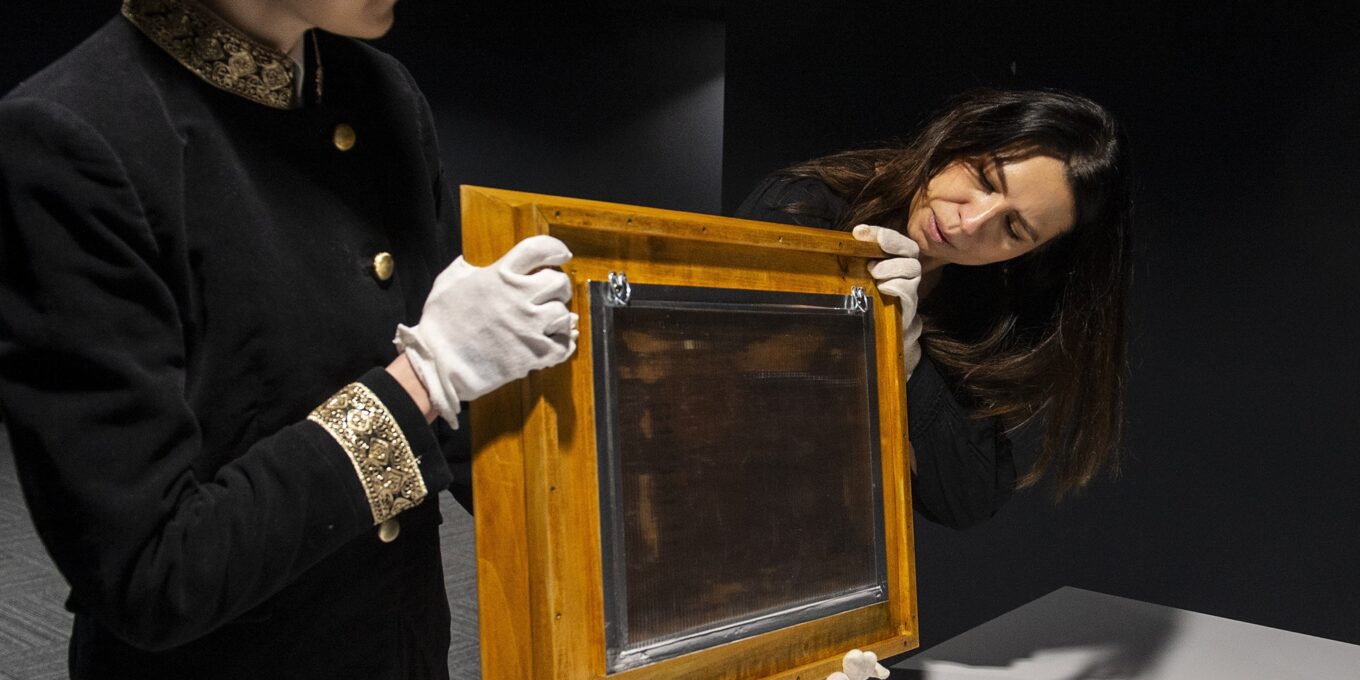Van Gogh lived in The Hague when he decided to become a painter. He was fascinated by the works of local artists, known as The Hague School, who mainly painted landscapes and genre scenes that captured the ambience of the Dutch province. Their works are dominated by muted browns and greys. They painted outdoors, which testifies to their innovativeness.
That is why van Gogh also took his easel out to peat bogs and country roads. He was sensitive to nature and to the hard life of the villagers. It was then that his first realistic landscapes emerged. The painting we hold in our Collection comes precisely from this period, known as the Dutch period.
In the painting, we see two thatched wooden cottages, separated by a low fence. Next to the cottage that is closer to us stands an open shed. A canal runs to the left of the painting. The cottages are set against the background of tall, slender trees. Above them, we see a blue sky with white clouds.
Country Huts Among Trees was painted in early autumn, perhaps shortly after a downpour. The sky is bright with the intensity of blue which contrasts with the muted colours of the soil, drowned in deep, warm browns and dirty greens. It seems as if, having reconstructed the structure of the cottages and the silhouettes of the trees, the artist wanted to capture the changes occurring in the sky, suddenly brightened with blue and pure white.
It is hard to resist the impression that if we were to step into the painting and take a few steps towards the cottages, we would wade through muddy soil, enveloped by the air filled with the scent of dampness and rotting wood.
Country Huts Among Trees was painted outdoors. It was painted alla prima, namely without an underpainting or a sketch. On closer inspection, it is evident that van Gogh painted timidly and sparingly. In some places, he applied the oil paint so thinly that the weave of the canvas shows through. The foliage of the trees is painted with such subtlety that it almost looks like a glow. This is not yet the Vincent that art lovers are familiar with. And yet, the impastos—thicker layers of paint in the roof area of the larger cottage and accents of bright yellow in the meadow area in the foreground—timidly peek out from the muddy browns. These are the first harbingers of the works Vincent would paint five years later.
Upon a close examination of the painting, we can also learn about its history. In the upper left corner of the canvas, there is a trace of folding from which the paint has chipped off. This is the result of taking the canvas off the stretcher and storing it loosely. Later, the canvas was glued to a board for stiffening. At that time, the edges of the painting were protected with a reddish-brown tape—fragments of which are still visible at the edges of the frame. All these details allow us to determine that the painting belonged to van Gogh’s early works, stored by his family in Holland in wooden crates after his departure to France. The wooden crates in question are known today as the Breda Crates.

